When I first examined Charlie 10 years ago, his shoulders were so arthritic and his shoulder cartilage was so degenerated, he could no longer lift 4×8 sheets of plywood or swing his hammer as a home remodeling contractor, let alone fish the Wilson River rowing his beloved McKenzie drift boat. Our musculoskeletal ultrasound examination mirrored his x-rays: advanced osteoarthritis (OA) with bone spurring of the glenohumeral and acromioclavicular joints. Although he had been told by his non-regenerative medicine doctors his only option was shoulder replacement surgery, we performed adipose tissue graft on both of his shoulders.
10 years later, at age 64, Charlie continues to work as a contractor, and remains an avid angler, now with a new 19 ft. aluminum power fishing boat. Both his shoulders have minimal pain, and he is planning to retire from contracting so he can devote more time to fishing and restoring classic cars.
Shoulder OA
The glenohumeral (GH) joint ranks third on the list of the large joints that are most affected by osteoarthritis, after the knee and the hip.
General nonsurgical modalities, including physical therapy, NSAIDs, and corticosteroid injections are the mainstay of conventional treatment and have at best shown minimal short-term effectiveness, and none of these treatments yield improvement in joint health or biomechanics.
Arthroplasty (total shoulder joint replacement) techniques have proven to be successful for the elderly, however, replacement options are not optimal for younger patients due to their higher functional demands and the finite life span of prostheses.
Orthobiologic therapies, including platelet-rich plasma (PRP) and adipose cell therapies, present great promise, and opportunity for the treatment of GH osteoarthritis.
Shoulder osteoarthritis is a complex multifactorial condition associated with progressive degeneration of cartilage, subchondral bone, and synovium. Subchondral bone changes are associated with a loss of shock absorption, brought on by articular shoulder cartilage degeneration. Bone reacts to the mechanical shock by hardening and bone spurs develop as cartilage degeneration progresses. The bone becomes stiffer, with reduced ability to absorb impact loads, thus causing more cartilage stress.1,2
Type-II collagen is the main structural protein of cartilage and constitutes a meshwork that is stabilized by other collagen types, glycosaminoglycans (GAGs) and non-collagenous proteins. Under the microscope, proteoglycans have a bottlebrush-like structure, with water molecules attached to the individual bristles, creating a flexible water cushion in shoulder cartilage, providing compressive resistance, and accounting for the fact that over 94% of the volume of human cartilage is water.
Cartilage destruction is only partially caused by mechanical wear and tear. Various proteases are secreted by the synovium itself, and these proteases break down the structural proteins that hold cartilage together, accelerating shoulder cartilage loss. When combined with joint instability from ligamentous laxity, cartilage loss is accelerated.3,4
Orthobiologics instead of surgery
Why Adipose stem cells for shoulder cartilage repair?
Mesenchymal stem cells (MSCs) that are derived from adipose tissue are known as adipose derived stem cells-ADSCs. ADSCs have gained popularity during the last 2 decades because they have a more specific cartilage regenerative capability compared with bone marrow-derived mesenchymal stem cells.5 The harvest site for ADSCs is the mid abdominal or posterior fat pads.
Compared to bone marrow cells, adipose cells possess an enhanced proliferative capacity and can retain multipotency longer than donor-matched marrow MSCs during expansion.6 ADSCs exert anti-inflammatory effects, and secrete various critical molecules involved in tissue regeneration, including collagens and collagen maturation enzymes, matricellular proteins, MMPs, and macrophage-colony stimulating factor, which may affect the metabolism of the extracellular matrix in osteoarthritic cartilage. This may constitute an advantage for osteoarthritic shoulder cartilage since homeostasis is restored between MMPs and the tissue inhibitors of metalloproteinases (TIMPs).7,8
Are there long-term Clinical studies of ADSCs for Shoulder Cartilage Degeneration?
Yes: Striano et al. conducted a study of osteoarthritis and shoulder pain that was unresponsive to conventional treatments. Eighteen patients were treated with microfragmented adipose tissue (10). Significant improvement was observed at the 1-year follow-up in the numerical pain score (NPS) and the combined physician and patient-reported pain and function scores (ASES score): the average improvement that was registered in the NPS went from 7.5 to 3.6 (p < 0.001), and the average improvement in the ASES score went from 33.7 to 69.2 at 1 year (p < 0.001). There were no reports indicating any postprocedural complications or serious adverse events. Seventy-five percent of the patients had a concomitant partial or full-thickness rotator cuff tear, which also resolved with the microfragmented adipose treatment. Therefore, it is impossible to know if the treatment’s pain and functional improvements were due to improvement in osteoarthritis, rotator cuff healing, or both.
3-year follow-up study
In this 2023 study, Efficacy and Long-Term Outcomes of Intra-Articular Autologous Micro-Fragmented Adipose Tissue in Individuals with Glenohumeral Osteoarthritis: A 36-Month Follow-Up Study, 65 patients with a mean age of 54 years and a nearly equal gender distribution with advanced glenohumeral osteoarthritis were followed for 3 years. The SANE score at 36 months indicated that 54 patients (83.08%) were completely satisfied with the treatment showing (score 84.6% out of 100%) and that ADMSC treatment exerted favorable effects on the clinical outcomes of patients with GOA, providing pain relief and improving shoulder function. For comparison, SANE scores after complete shoulder replacement are 75-85%.9,10
Still catching his limit
Since his first stem cell treatment 10-years ago, Charlie has been catching his wild salmon limit (along with working 40+ hours a week in his construction business). Charlie continues to receive quarterly shoulder “tune-ups” with PRP. Adipose stem cell treatment has allowed him to work hard as a sought-after remodeling contractor and enjoy his passion for wild-caught Oregon salmon.
Dr. Noel Peterson, ND, DAAPM, is the Medical Director of Oregon Regenerative Medicine, and has practiced naturopathic medicine in Lake Oswego, OR, since 1978. He specializes in natural and regenerative cellular medicine, including Prolotherapy, PRP (Platelet Rich Plasma), and Autologous Stem Cell therapy. Peterson has taught prolotherapy nationally and internationally. In 2019, the Oregon Director Association of Naturopathic Physicians (OANP) and National University of Natural Medicine (NUNM) selected Dr. Peterson to be honored with naturopathic medicine’s prestigious Living Legend Award.
Sources
- Li B, Aspden RM. Composition and mechanical properties of cancellous bone from the femoral head of patients with osteoporosis or osteoarthritis. J Bone Miner Res. 1997. April;12(4):641-51. [PubMed]
- Bobinac D, Spanjol J, Zoricic S, Maric I. Changes in articular cartilage and subchondral bone histomorphometry in osteoarthritic knee joints in humans. Bone. 2003. March;32(3):284-90. [PubMed]
- Yang CY, Chanalaris A, Troeberg L. ADAMTS and ADAM metalloproteinases in osteoarthritis – looking beyond the usual suspects. Osteoarthritis Cartilage. 2017. July;25(7):1000-9. Epub 2017 Feb 13. [PMC free article]
- Malemud CJ. Inhibition of MMPs and ADAM/ADAMTS. Biochem Pharmacol. 2019. July;165:33-40. Epub 2019 Feb 28. [PMC free article] [PubMed]Â
- Burrow KL, Hoyland JA, Richardson SM. Human adipose-derived stem cells exhibit enhanced proliferative capacity and retain multipotency longer than donor-matched bone marrow mesenchymal stem cells during expansion in vitro. Stem Cells Int. 2017;2017:2541275 Epub 2017 May 3. [PMC free article] [PubMed] [Google Scholar]
- Denkovskij J, Bagdonas E, Kusleviciute I, Mackiewicz Z, Unguryte A, Porvaneckas N, Fleury S, Venalis A, Jorgensen C, Bernotiene E. Paracrine potential of the human adipose tissue-derived stem cells to modulate balance between matrix metalloproteinases and their inhibitors in the osteoarthritic cartilage in vitro. Stem Cells Int. 2017;2017:9542702 Epub 2017 Jul 27. [PMC free article] [PubMed]
- Â Kalinina N, Kharlampieva D, Loguinova M, Butenko I, Pobeguts O, Efimenko A, Ageeva L, Sharonov G, Ischenko D, Alekseev D, Grigorieva O, Sysoeva V, Rubina K, Lazarev V, Govorun V.Characterization of secretomes provides evidence for adipose-derived mesenchymal stromal cells subtypes. Stem Cell Res Ther. 2015. November 11;6(1):221. [PMC free article] [PubMed]
- Striano RD, Malanga AG, Bilbool N, Khatira A.Refractory shoulder pain with osteoarthritis, and rotator cuff tear, treated with micro-fragmented adipose tissue. Journal of Orthopaedics Spine and Sports Medicine. J Orthop Spine Sports Med. 2018;2(1):014. [Google Scholar]
- Natali S, Screpis D, Patania E, De Berardinis L, Benoni A, Piovan G, Iacono V, Magnan B, Gigante AP, Zorzi C. Efficacy and Long-Term Outcomes of Intra-Articular Autologous Micro-Fragmented Adipose Tissue in Individuals with Glenohumeral Osteoarthritis: A 36-Month Follow-Up Study. J Pers Med. 2023 Aug 26;13(9):1309. doi: 10.3390/jpm13091309. PMID: 37763077; PMCID: PMC10532945. https://www.ncbi.nlm.nih.gov/pmc/articles/PMC10532945/ Hawkins RJ, Boes N, Thigpen CA, Shanley E, Pill SG, Kissenberth MJ. Measure what matters: Single Assessment Numeric Evaluation (SANE) score as the critical measure for shoulder outcomes. J Shoulder Elbow Surg. 2024 Jun;33(6):1397-1403. doi: 10.1016/j.jse.2023.12.001. Epub 2024 Feb 1. PMID: 38295936.



